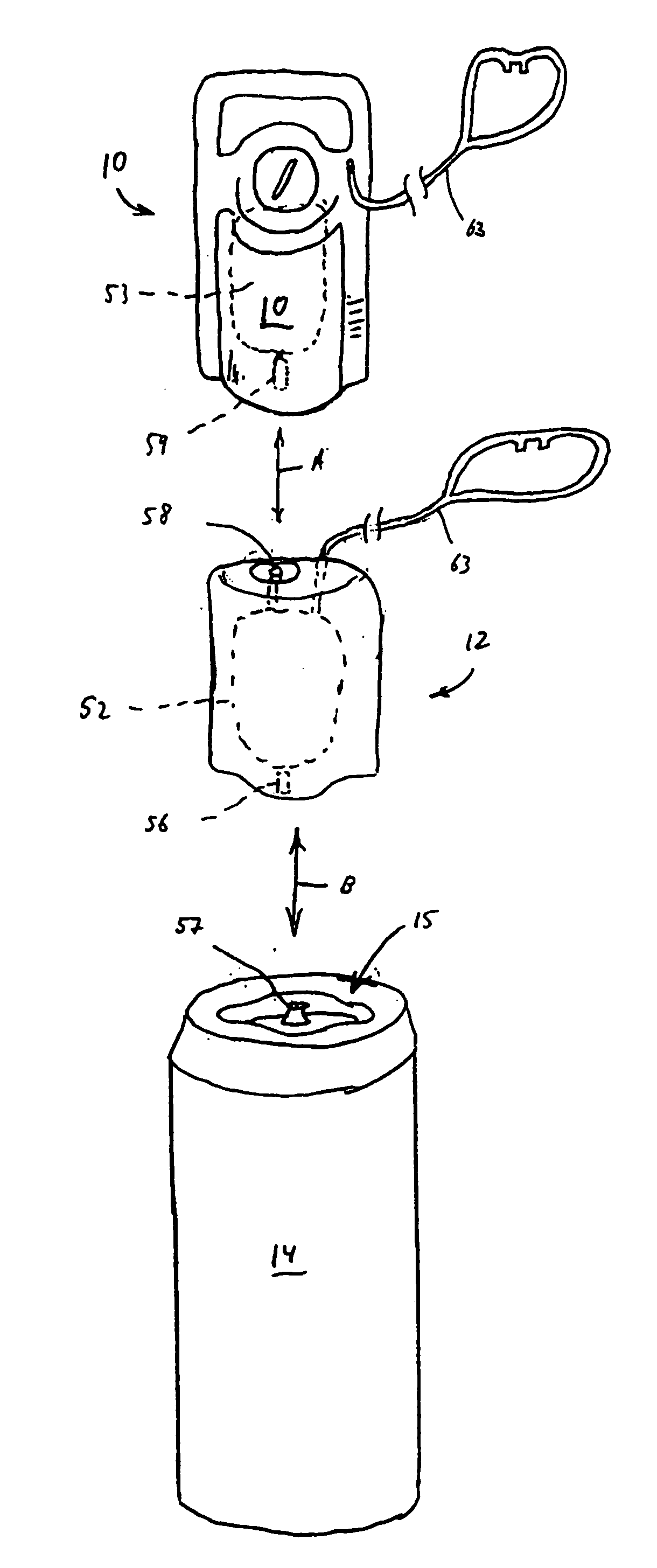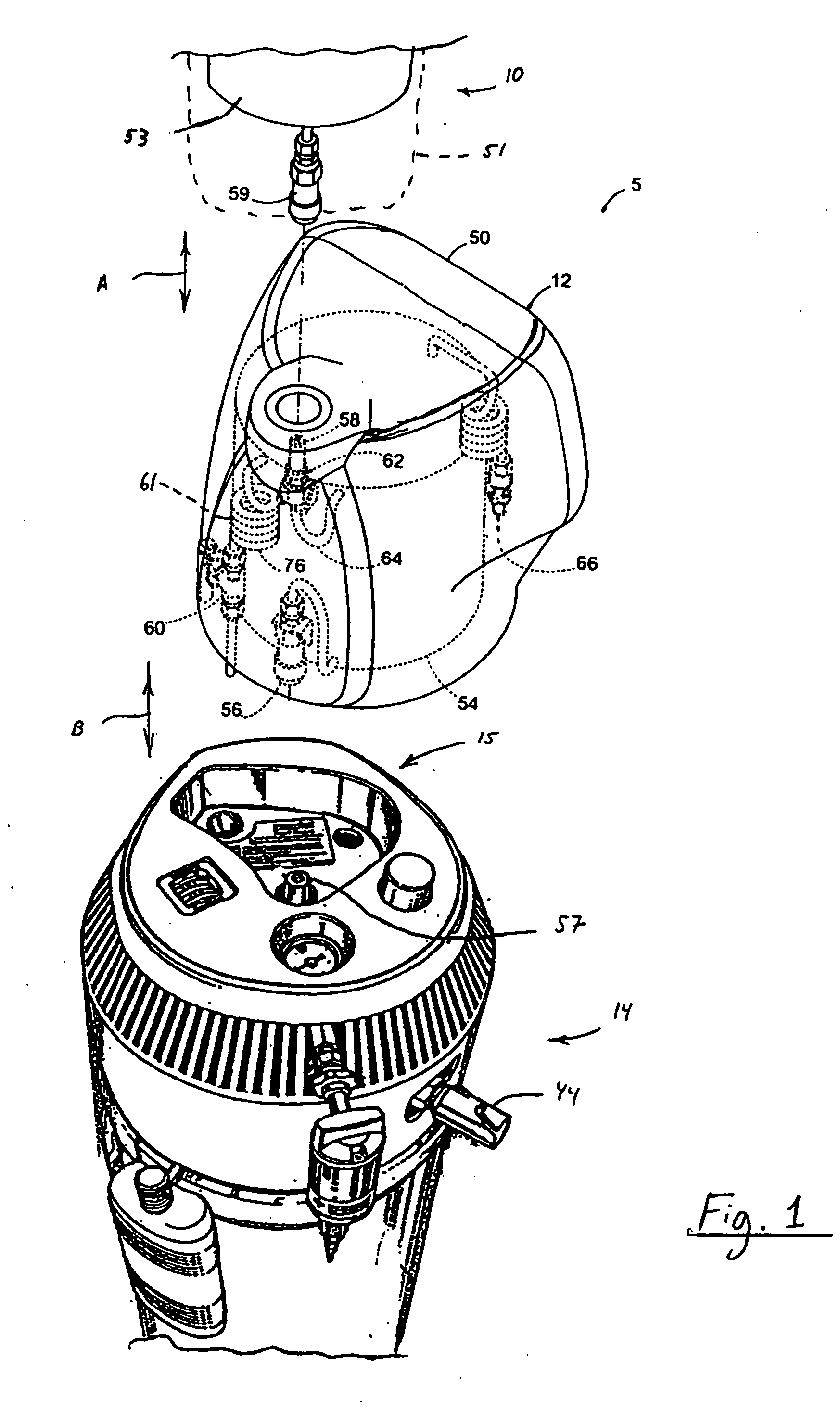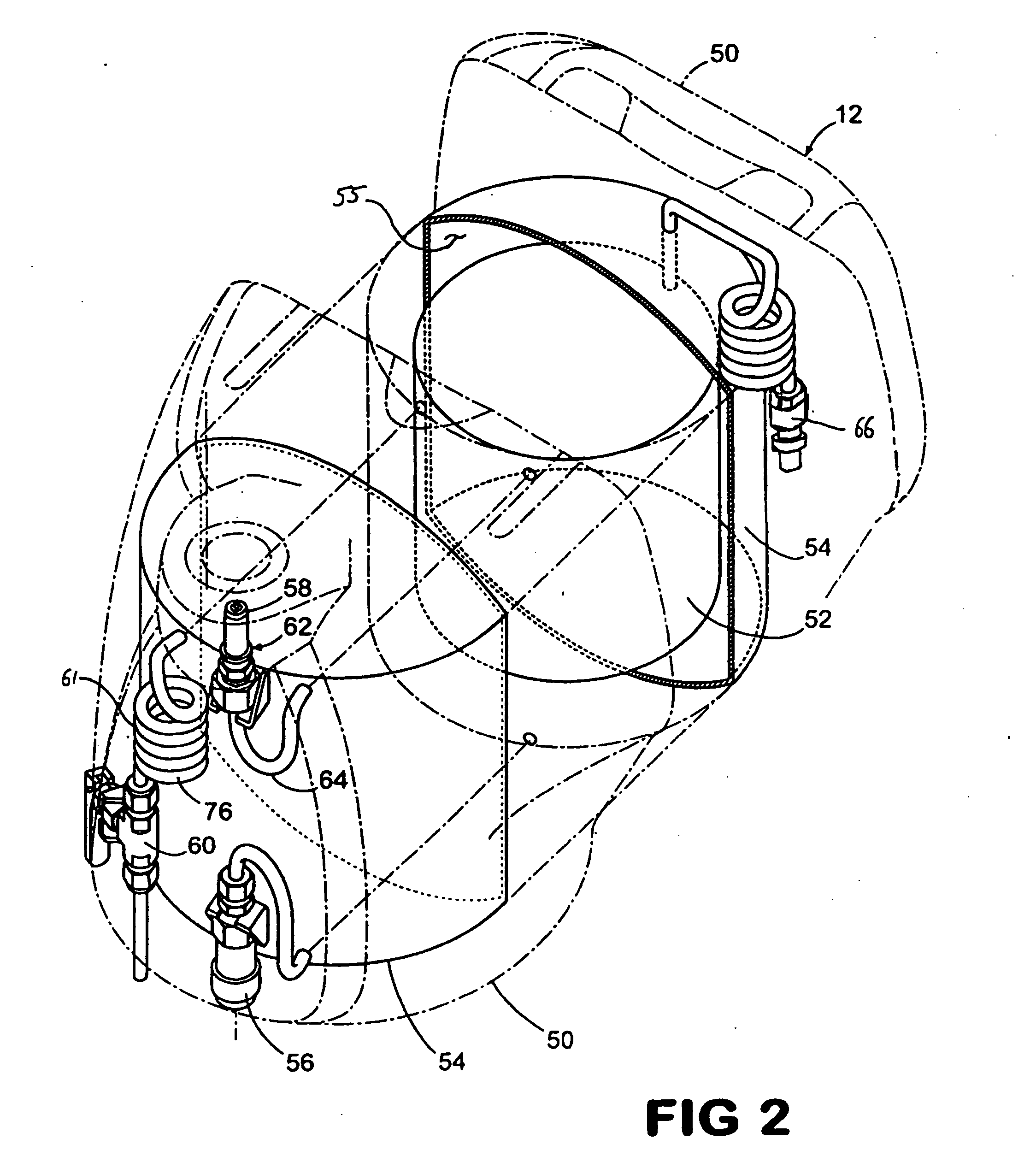Portable liquid oxygen delivery system
- Summary
- Abstract
- Description
- Claims
- Application Information
AI Technical Summary
Benefits of technology
Problems solved by technology
Method used
Image
Examples
Embodiment Construction
[0022] As shown in FIG. 1, a portable liquid oxygen recharging system 5 for an individual according to the principles of the present invention, includes a portable liquid oxygen (LOX) delivery apparatus 10, a portable LOX recharger 12, and a stationary LOX storage canister 14. The stationary LOX storage canister is installed in the user's home or residence, while portable LOX delivery apparatus 10 and portable LOX recharger 12 are designed to be easily transported by the user away from the stationary LOX storage canister. Portable LOX delivery apparatus 10 is connectable to LOX recharger 12 or to stationary LOX storage canister 14 to receive liquid oxygen from the LOX recharger or the stationary LOX storage canister. LOX recharger 12 is connectable to the stationary LOX storage canister to receive liquid oxygen from the stationary LOX storage canister. The coupling of portable LOX delivery apparatus 10 to LOX recharger 12 is illustrated by arrow A, and the coupling of LOX recharger ...
PUM
| Property | Measurement | Unit |
|---|---|---|
| Mass | aaaaa | aaaaa |
| Mass | aaaaa | aaaaa |
| Mass | aaaaa | aaaaa |
Abstract
Description
Claims
Application Information
 Login to View More
Login to View More - R&D
- Intellectual Property
- Life Sciences
- Materials
- Tech Scout
- Unparalleled Data Quality
- Higher Quality Content
- 60% Fewer Hallucinations
Browse by: Latest US Patents, China's latest patents, Technical Efficacy Thesaurus, Application Domain, Technology Topic, Popular Technical Reports.
© 2025 PatSnap. All rights reserved.Legal|Privacy policy|Modern Slavery Act Transparency Statement|Sitemap|About US| Contact US: help@patsnap.com



